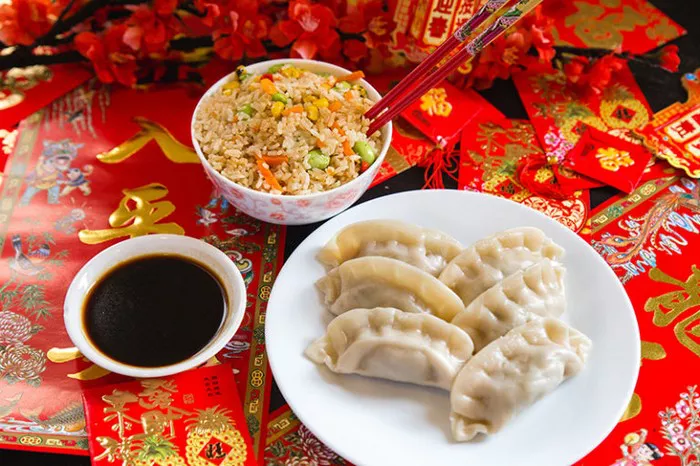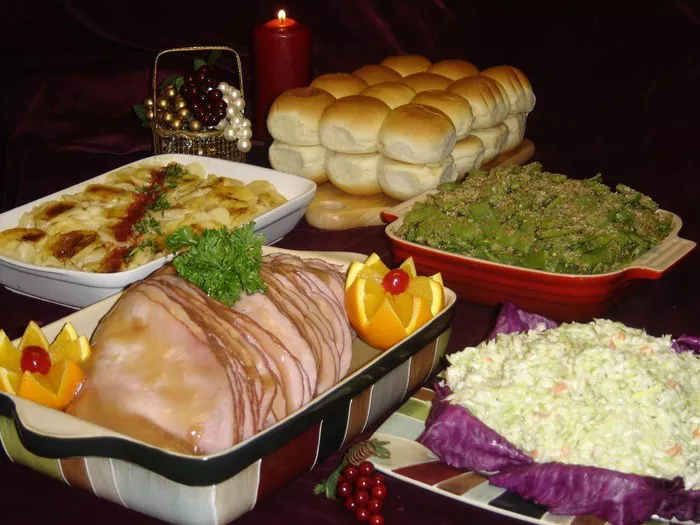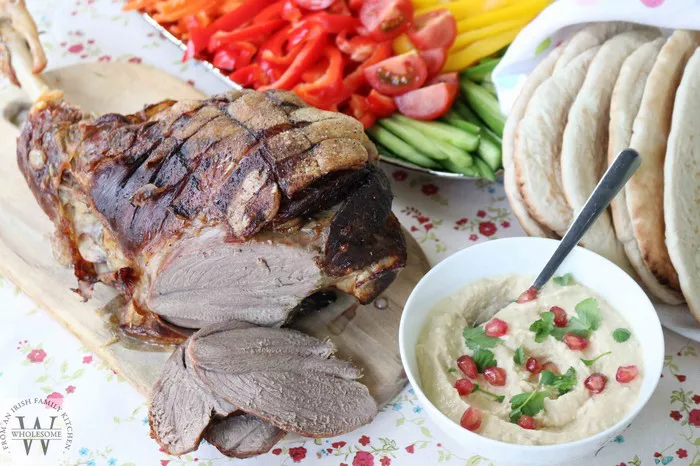Lunar New Year, also known as Chinese New Year or Spring Festival, is one of the most significant and widely celebrated festivals in many Asian cultures. This joyous occasion marks the beginning of the lunar calendar and is a time for families to come together, honor their ancestors, and wish for good fortune in the year ahead. Central to the festivities are the delicious and symbolic dishes that are prepared and shared. In this article, we will explore the diverse and delectable foods that people enjoy during Lunar New Year celebrations.
1. Dumplings (Jiaozi)
Dumplings, known as “jiaozi” in Chinese, are an iconic Lunar New Year dish. These small pockets of dough are typically filled with a mixture of ground meat, vegetables, and seasonings. The shape of dumplings resembles ancient Chinese money, symbolizing prosperity and wealth. Here are some popular variations of dumplings:
Pork and Cabbage Dumplings: These are a classic choice, with a savory filling of ground pork and cabbage.
Vegetarian Dumplings: Filled with a mix of finely chopped vegetables and tofu, these dumplings cater to vegetarian preferences.
Sweet Dumplings: For dessert, sweet dumplings filled with red bean paste or sesame paste are often served.
2. Nian Gao (Sticky Rice Cake)
Nian Gao, also known as “sticky rice cake” or “year cake,” is another must-have dish during Lunar New Year. The pronunciation of “nian gao” sounds like “higher year,” signifying a better and more prosperous year. This glutinous rice cake can be prepared in various ways:
Steamed Nian Gao: It’s steamed to a soft, chewy texture and served with brown sugar syrup.
Fried Nian Gao: Slices of nian gao are dipped in batter and fried until crispy, creating a delightful contrast in textures.
3. Fish (Yu)
In Chinese, the word for “fish” (yu) is a homophone for “surplus” or “extra.” As a result, fish is a symbol of abundance and prosperity. The tradition of serving a whole fish, often steamed or braised, is prevalent during Lunar New Year feasts. The presentation of the fish with the head and tail intact symbolizes a good start and finish to the year.
4. Spring Rolls
Spring rolls, also known as “chun juan” or “lumpia,” are a popular appetizer during Lunar New Year. These crispy, cylindrical rolls are often filled with a mixture of vegetables, meat, and sometimes seafood. They are enjoyed not only for their delicious taste but also for their symbolic significance, representing wealth and a fresh start.
5. Tangyuan (Sweet Rice Balls)
Tangyuan, or sweet rice balls, are round and sticky treats often enjoyed during the Lantern Festival, which falls on the fifteenth day of the Lunar New Year celebrations. These colorful and sweet dumplings are stuffed with various fillings like red bean paste, black sesame paste, or peanut butter.
6. Eight-Treasure Rice (Babaofan)
Eight-Treasure Rice, also known as “babaofan,” is a delightful dessert commonly served during the festivities. This dish features glutinous rice cooked with eight different sweet ingredients, such as red dates, raisins, and nuts. It’s a symbol of unity and family harmony.
7. Longevity Noodles
Longevity noodles, also called “changshou mian,” are long, uncut noodles that represent a wish for a long and healthy life. They are usually served in a flavorful broth or stir-fried with vegetables and meat.
In conclusion, Lunar New Year is a time of rich traditions, and the cuisine plays a vital role in these celebrations. From dumplings to nian gao and fish to spring rolls, each dish carries deep cultural and symbolic meaning, inviting good luck and prosperity into the homes of those who celebrate. As you prepare for the next Lunar New Year, consider incorporating some of these dishes into your festivities to honor the traditions and create delicious memories with your loved ones.























